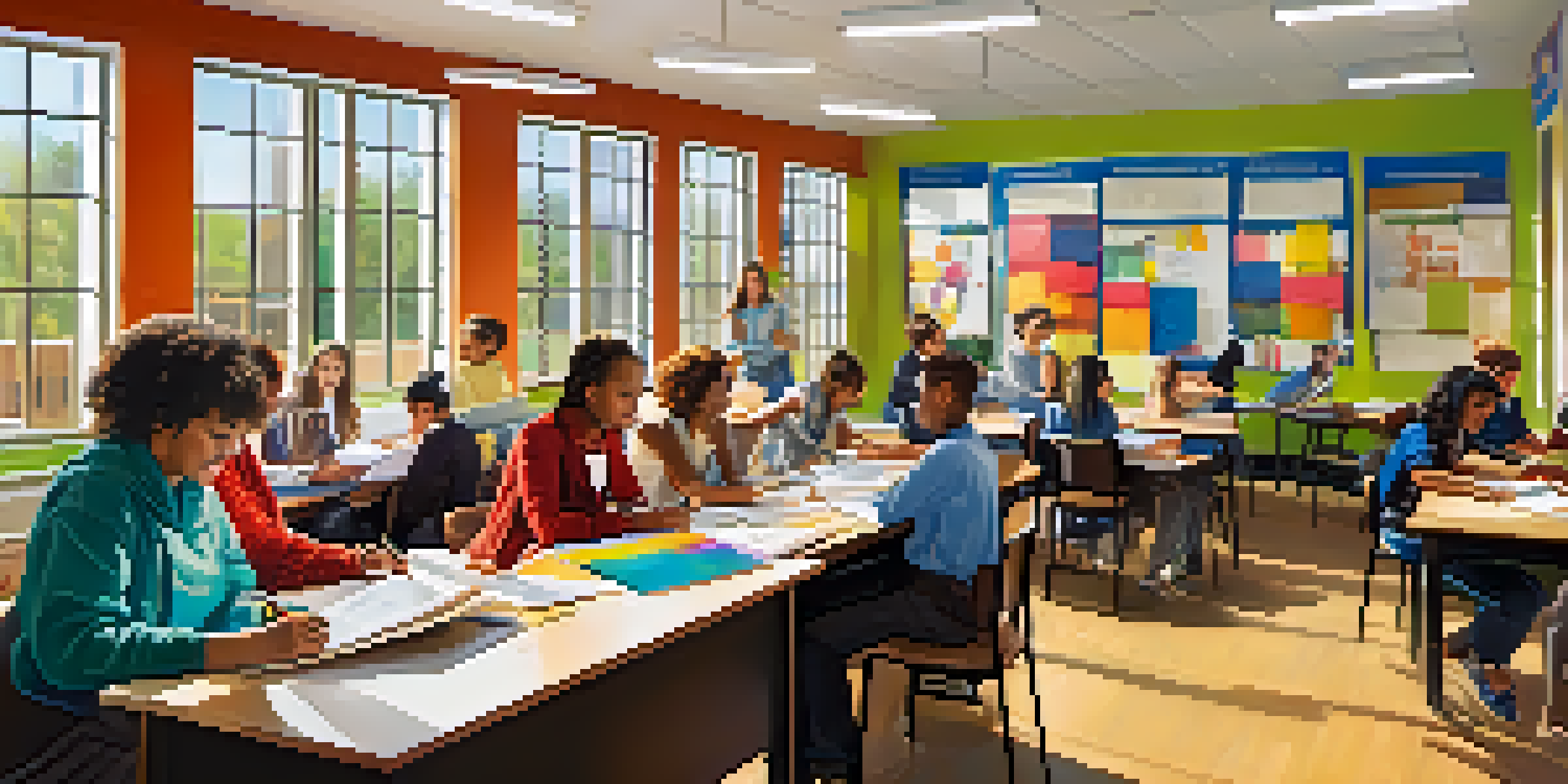Social Learning Theory: Implications for Adult Education

Understanding Social Learning Theory Basics
Social Learning Theory, developed by Albert Bandura, emphasizes that people learn from one another through observation and imitation. This theory suggests that learning occurs not just through direct experience but also by watching the behaviors of others. For instance, a trainee might learn effective communication skills by observing a seasoned colleague interact with clients.
Tell me and I forget. Teach me and I remember. Involve me and I learn.
The importance of social context in learning cannot be overstated. Bandura introduced the concept of reciprocal determinism, where personal factors, behavior, and the environment all influence one another. This means that in an adult education setting, the dynamics of the group can significantly impact individual learning outcomes.
Understanding these foundational principles helps educators create environments that foster collaboration and interaction. By leveraging the social aspects of learning, educators can enhance engagement and retention among adult learners, who often bring diverse experiences to the table.
The Role of Observation in Adult Learning
One of the key aspects of Social Learning Theory is the idea that observation plays a critical role in learning. Adults often observe peers or instructors to gauge appropriate responses and behaviors in various situations. For example, in a workshop setting, an adult learner might pick up new skills simply by watching a demonstration.

This observational learning is particularly valuable in adult education, where learners often have a wealth of prior knowledge and experiences. They can relate new information to their existing understanding by seeing how others apply concepts in real-life scenarios. This not only enhances comprehension but also encourages peer interaction, which is vital for adult learners.
Importance of Observation in Learning
Adults learn effectively by observing peers and instructors, allowing them to integrate new skills with their existing knowledge.
Encouraging a culture of observation within educational settings can lead to richer learning experiences. Facilitators can design activities that allow learners to showcase their skills while others observe, creating a cycle of learning that benefits everyone involved.
Modeling Behavior: A Powerful Learning Tool
Modeling, as highlighted in Social Learning Theory, involves demonstrating behaviors that learners can then emulate. In adult education, instructors can act as role models, providing examples of best practices in their field. This can be seen in mentorship programs, where experienced professionals guide newcomers through real-world challenges.
We learn from failure, not from success!
For instance, in a business training session, a facilitator might role-play a difficult conversation with a disgruntled employee. Participants can observe the techniques used and then practice similar scenarios, reinforcing their learning through simulation. This hands-on approach not only builds confidence but also enhances skills retention.
Moreover, modeling can extend beyond the instructor to include peer interactions. When learners share their experiences and demonstrate their approaches, it creates a collaborative learning environment where everyone benefits from each other's strengths.
The Impact of Social Interaction on Learning
Social Learning Theory highlights the importance of social interactions in the learning process. Adults often learn best in environments that encourage discussion and collaboration. Group activities, such as team projects or peer reviews, provide opportunities for learners to share insights and perspectives.
This interaction not only enhances understanding but also builds a sense of community among learners. For example, a study group can help individuals clarify concepts and motivate each other to engage more deeply with the material. The social bonds formed during these interactions can lead to lasting networks beyond the classroom.
Role of Self-Efficacy in Education
High self-efficacy encourages adult learners to take on challenges and persist, enhancing their overall learning experience.
Incorporating structured social interactions into adult education programs can significantly boost learner engagement and satisfaction. When learners feel connected to one another, they are more likely to participate actively and retain the information being taught.
Self-Efficacy and Its Importance in Adult Education
Self-efficacy, another critical component of Social Learning Theory, refers to an individual's belief in their ability to succeed in specific situations. When adult learners have high self-efficacy, they are more likely to take on challenges and persist through difficulties. Educators can foster this belief by providing positive feedback and opportunities for mastery.
For example, when learners successfully complete a challenging project, their confidence grows, reinforcing their belief in their capabilities. This cycle of achievement encourages them to tackle even more complex tasks in the future. Therefore, educators should create opportunities for small wins to boost learners' self-efficacy.
By understanding the role of self-efficacy, adult educators can tailor their approaches to build confidence in their learners. Encouraging a growth mindset—where students view challenges as opportunities for growth—can significantly enhance their overall learning experience.
Creating Collaborative Learning Environments
To harness the principles of Social Learning Theory effectively, educators must create collaborative learning environments. This can be achieved through the strategic design of courses that emphasize teamwork and group problem-solving. For instance, using case studies where learners must work together to find solutions can foster collaboration.
In these settings, learners not only share knowledge but also learn from each other's perspectives and experiences. This collaborative approach mimics real-world situations where teamwork is essential, preparing adult learners for their professional lives. It also cultivates essential soft skills like communication and conflict resolution.
Creating Collaborative Environments
Collaborative learning settings foster teamwork and communication, enriching adult education and preparing learners for real-world scenarios.
Ultimately, a collaborative learning environment promotes a sense of belonging and encourages active participation. When learners feel they are part of a community, they are more likely to engage deeply with the material and support one another in their learning journeys.
Adapting Social Learning Theory for Diverse Adult Learners
In adult education, it's crucial to recognize the diverse backgrounds and learning styles of participants. Social Learning Theory can be adapted to accommodate these differences by offering a variety of learning modalities. For example, some learners may thrive in visual settings, while others may prefer hands-on experiences or auditory instructions.
Educators can provide multiple avenues for learners to engage with content, such as videos, interactive discussions, and group activities. By doing so, they cater to different preferences and ensure that all learners can benefit from social learning opportunities. This flexibility is particularly important in adult education, where learners come from varied professional and cultural backgrounds.

By adapting Social Learning Theory to meet the needs of diverse learners, educators can create more inclusive and effective learning environments. This not only enhances the overall learning experience but also fosters a sense of belonging among all participants.